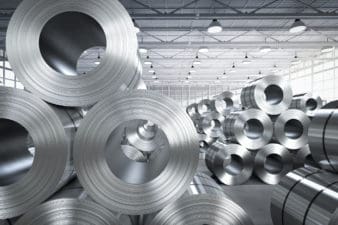It’s one of my favourite ways to invest in the Canadian resource sector — and apparently legendary investor George Soros agrees with me.
The company is Cameco Corporation (TSX: CCO)(NYSE: CCJ), the world’s largest uranium producer. Its key asset, McArthur River, is one of the largest and highest-grade mines in the world. It alone accounts for more than 10% of the industry’s output.
Cameco is an unusual bet. As anyone who has been following the industry can tell you, the past six years have been hard on uranium miners.
Uranium prices collapsed between 2007 and 2010, where spot rates fell as low as US$40/lb. Then Japan’s Fukushima nuclear disaster hit in early 2011. Prices took a second leg down as the country scrapped its atomic energy program. Just take a look at the chart below.
As you can see, uranium has been the world’s most despised commodity ever since. Only a few months ago, prices hit a nine-year low. But that’s about to change.
Source: IndexMundi.com
Today, uranium trades at US$36/lb. However, the average cost to produce one pound of uranium is more than twice that — about US$75/lb. Miners are hemorrhaging money.
That can’t last. Large players will curb operations. Small miners will go bust. Eventually, prices will rise to meet the cost of production.
And despite critics, uranium demand is still growing. Nuclear power currently produces nearly a fifth of U.S. electricity. Developing countries like China and India need atomic energy to power their economic growth.
As supplies tighten and demand grows, common sense says that uranium prices will go up. Of course, we don’t know exactly when that will happen. But because the situation cannot get much worse, the downside risk here is low.
Apparently, Soros is also bullish on uranium miners. According to recent SEC filings, the billionaire investor disclosed that he owned 2.3 million Cameco shares. As of June, that represented an investment stake of US$44.7 million.
As the largest producer in the world, Cameco is like the Wal-Mart Stores, Inc. of the uranium industry. The company has the raw scale needed to survive the sector’s current doldrums. And because of the leverage inherent in its business model, Cameco’s profits could rise much faster than the underlying commodity.
What’s interesting is that Soros paid between $22 and $27 per share for his recent acquisitions, up to 36% above Thursday’s closing price. If Soros is buying at even higher prices, then Cameco has a lot of upside from here.






